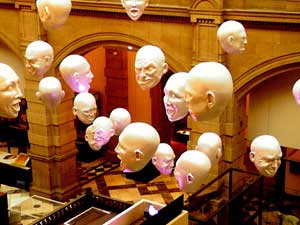
Source: “Mind Control,” Drinksmachine, Flickr
This lesson deals primarily with diction and tone and how to recognize them in your reading. Diction and tone are stylistic devices a writer uses to help a reader or listener “hear” what the writer is trying to say. Tone describes the author’s attitude toward the material, the audience, or both. According to Cliff’s Advanced Placement English Language and Composition Examination Preparation Guide, tone is similar to mood and is easier to determine in spoken language than in written language. Some words used to describe tone are playful, serious, businesslike, sarcastic, humorous, formal, ornate, and somber.
Tone is largely determined by diction or the word choices a writer makes. The process of choosing the right word involves denotation and connotation, which we will also discuss in this lesson.
Sometimes the tone is very clear, for example, when someone is obviously angry or distressed. To indicate these emotions, the writer might include words like “screaming” or “sobbing” and use exclamation points. Sometimes the tone is more subtle, though, and requires you to read closely in order to fully understand what is happening.
You understand the tone your friends use when you are having a casual conversation, but finding the tone as you read is sometimes more challenging because you can’t hear what is being said. You can see the words as you are reading, but you can't actually hear the writer speaking the words. For this reason, reading a text aloud can sometimes help you to identify an author’s tone.
This lesson will help you identify diction and tone in your reading and will help you answer these questions:
- What does the author mean?
- What is the author’s attitude about what he or she is writing?
- How will my understanding of a text affect the way I feel about it?
Being able to find the answers to these questions will help you enjoy your reading more. So let’s get started!